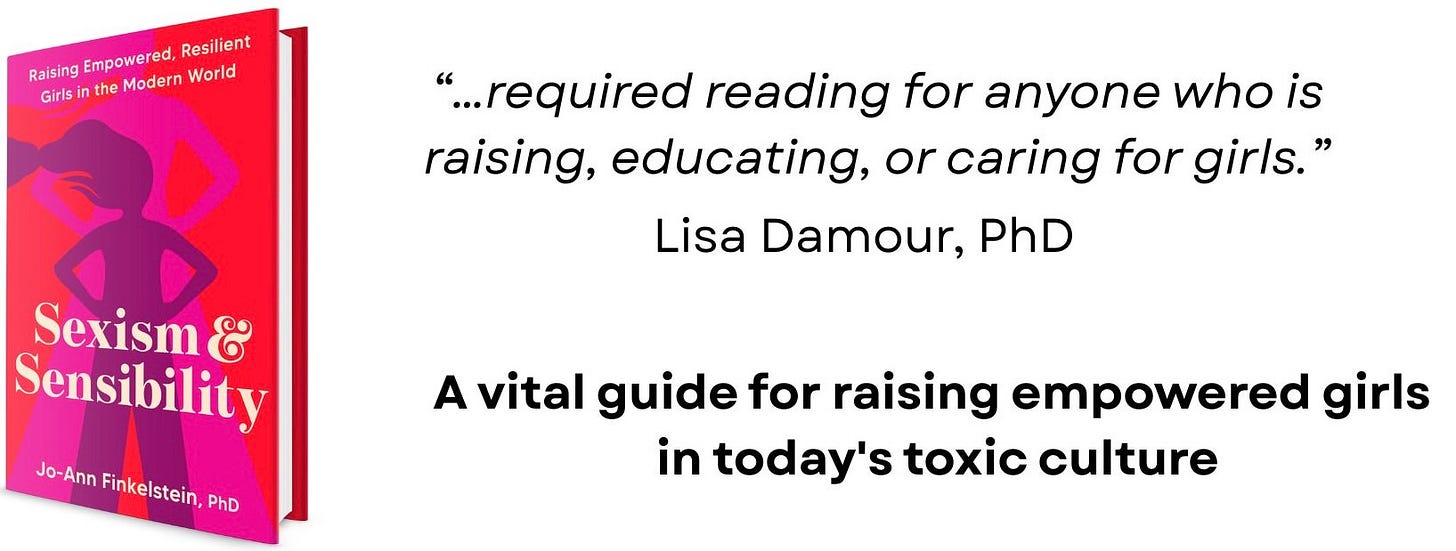“Believe in yourself!”
“Know your worth!”
“Speak up!”
“Lean in!”
These are the self-esteem slogans girls hear all the time. But we rarely tell them why so many girls still doubt themselves—even when they’re crushing it.
Sure, some self-doubt is just part of being human. But for girls socialized from a young age to seek perfection, please others, avoid risk, and stay modest—those feelings of fraudulence can take root early. We tell them to raise their hands while we let boys shout out answers. We call girls “bossy” and boys “leaders.” We praise girls for being “good” and penalize them for being too assertive. We are seven times more likely to use words like “pretty,” “sweet,” and “cute” when talking about girls—and twice as likely to reserve words like “brave,” “genius,” and “innovative” for boys (gah!). Girls as young as five think boys are taken more seriously.
When you grow up in a world that underestimates your abilities, questions your leadership, dismisses your anger, sexualizes your body, and mocks your ambition, it’s almost impossible not to internalize doubt.
And those girls? They grow up to become us—women who feel like they’re constantly about to be exposed as frauds; women who attribute successes to luck or timing or fooling others. In my practice, nearly every woman I’ve worked with has brought up impostor syndrome and said, “That’s me!” I have yet to hear a man use the term. That’s not to say men never feel it. But research shows the majority of those who experience it most intensely and have trouble internalizing their accomplishments—even with proof of their competence right in front of them—are women.
Even the most accomplished women among us aren’t immune. Michelle Obama, Maya Angelou, Greta Gerwig, and Margot Robbie have all spoken candidly about feeling like frauds. Sonia Sotomayor described her first days at Princeton as like “a visitor landing in an alien country.” And other successful women are subject to the typical criticisms lobbed at girls and women—meant to make them feel like they’re simultaneously too much and not enough. Taylor Swift is mocked and called “dramatic” for expressing emotion because she sings about breakups. Simone Biles was criticized for “letting the team down” because she attended to her personal mental health needs. AOC is constantly interrupted, scrutinized for her looks, and called “a girl” to diminish her authority. Each one has talked about the need to find a way to get beyond the messages designed to make them doubt themselves.
As I argue in Sexism & Sensibility, if we want to help girls—and the women they become—feel more confident and believe in their ability to lead, we need to connect the dots between their inner self-doubt and the outer forces that help shape it.
When it comes to impostor syndrome, we have to look at how the messages girls absorb early on shape warped ideas about competence, failure, and success—often reinforced, unintentionally, by well-meaning parents—and help them rewrite the script.
Because if she—and you—are going to stop feeling like an impostor, you have to stop thinking like one.
The mediocre white man is doing something better than the rest of us—and, I promise you, it’s not his work.
→ Upgrade to keep reading: Learn what impostor syndrome really is, what it isn’t, why it sticks, and the steps you can take to help girls (and yourself) rewrite the story
Buy a copy of my award-winning book, Sexism & Sensibility: Raising Empowered Resilient Girls in The Modern World, and get 50% off a one-year subscription to this newsletter. That’s a book and a subscription for less than the subscription alone! Just email your receipt—I’ll send you the link.




